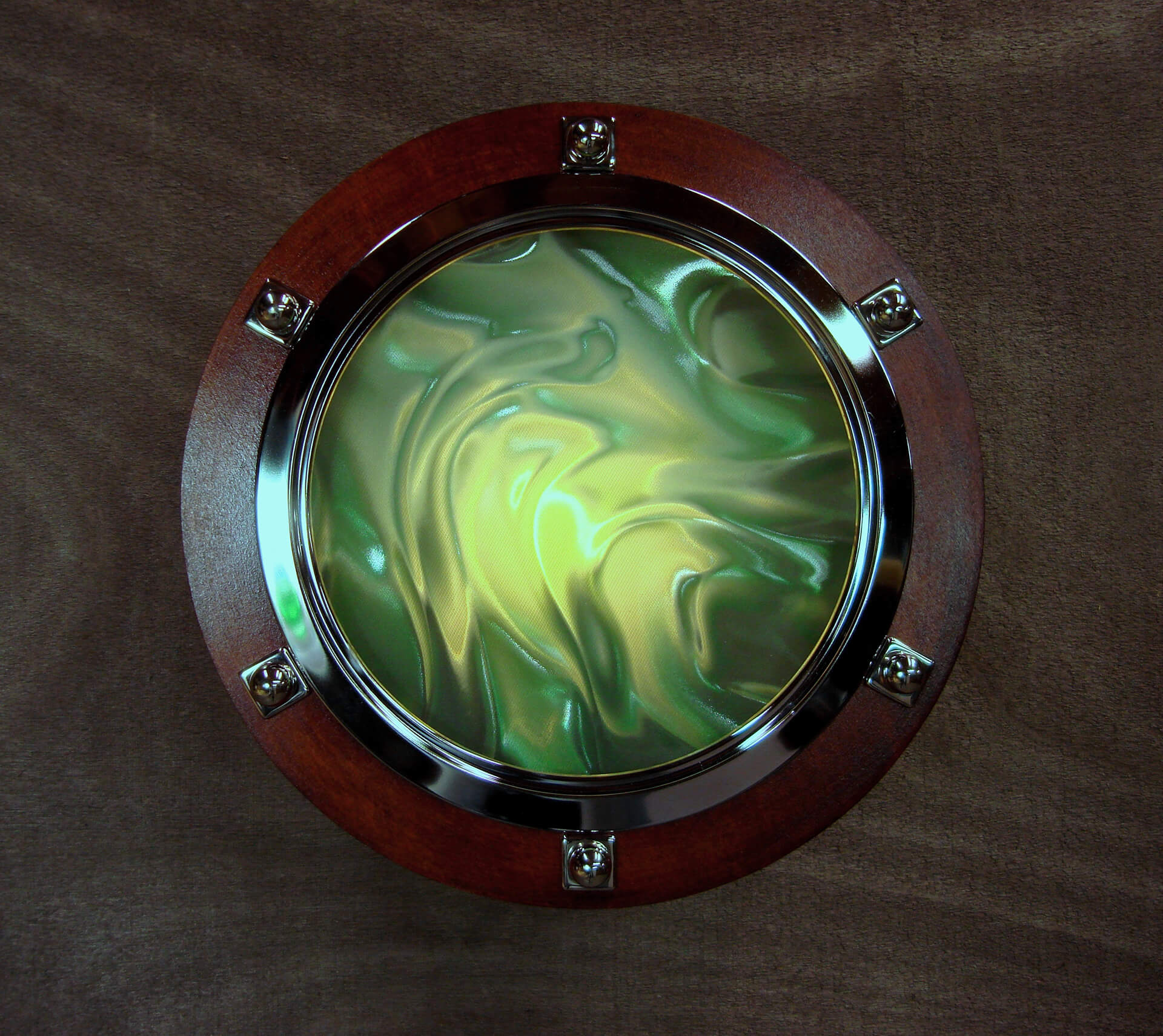Shining A Light On Steampunk


Art Donovan illuminates spaces with new, edgy light fixtures of the Steampunk genre. Originally from Jackson Heights, Donovan began calling Southampton home in 1994 when he moved with his wife and partner, Leslie, upon opening up their design studio. Together, the pair has created a world where creativity of yesteryear meets the distinguished contemporary design of today. Attaining a sort of “love it or leave it” mentality towards life, Donovan Designs brings passion to each individual piece.
How did you and your wife meet?
I first met Leslie while living in Long Beach [before moving to Southampton] and commuting on the Long Island Railroad to New York City. She also lived in Long Beach and commuted to Madison Avenue, where she was a consultant for Yves Saint Laurent. Leslie is the love story that lit up and continues to light up my entire life. We just celebrated our 30th anniversary and have been business partners in Donovan Design for the past 28 years. We spend nearly every hour of our lives together.
Leslie also has her own home staging business, Staging Places, and she was the first stager on Long Island. We find that her staging business and our lighting company share so many components that each business has great cross-over work.
What inspired you to get into this type of work?
The short story: I was a graphic designer and illustrator in New York since 1975. The variety of design and advertising firms I worked for provided an incredible technical and aesthetic background.
You had to be proficient in every discipline of the commercial visual arts and skilled in using every medium. There was sculpture, model building, illustration, graphic design, print and photographic technologies, designing and producing logos, plus packaging and industrial design for products.
It was all like boot camp for an artist every day, but the talented people I had the honor of working alongside were so very generous with their knowledge and assistance.
But by 1990, the charm of that long commute from Long Beach to NYC had disappeared for us both and Leslie and I decided to go on our own and create our first home accessory, The Deco Lamp. I will add here that the first five years of owning and operating a new business is absolutely hair-raising.
Why lighting?
For many years, I had noticed that when a major style and design shift was about to happen it was always lamps and lighting that first pointed the direction and led the way. I also considered lighting to be one of the most creative and satisfying outlets for a product designer and understood just how much a lamp can do to change an environment. After all, a beautiful and glowing sculptural object has a such a visual poetry about it. But it wasn’t long before we also added clocks and furnishings to our product line.
Describe the first piece you created.
My major influence came from working for Donald Deskey Associates in New York City as a senior designer. Deskey was the Art Deco master who designed Radio City Music Hall. I had long talks with him about the golden age of American Art Deco, his experiences, and unique design philosophies. This was such a rare and incredible experience learning about Art Deco from the master himself!
Naturally, my first design was a stylized Art Deco lamp, but cleaner and slightly more modern with a bold graphic shape, jewel-toned shades, and hand finished maple bases. That was the lamp that started it all for us and we were thrilled that it was featured as a full page in New York Magazine the very first month it became available.
How long do most pieces take? where can east enders find them?
Each lamp, and each project, is so very different. I’ve built anywhere from 15 lamps in a single day to a sculptural lamp design that took over three months to complete. We have our small gallery that is in constant rotation with new designs and experiments. Our designs change almost every month and we welcome visitors and clients alike.
Define the steampunk genre. What’s your personal influence?
Since its visual inception 11 years ago, Steampunk now has so many different meanings and forms. But to put it simply, it’s a creative re-imagining of 19th-Century Victorian styling that’s heavily infused with the great science and science fiction literature of the day — H.G. Wells, Mary Shelley, Jules Verne, and even Bram Stoker. There’s much visual and literary inspiration to pick and choose from!
It’s been a pure joy creating pieces in this style and brings real creative freedom to the process. Lately, however, my Steampunk lighting design work relies on actual science for inspiration, such as NASA’s James Webb telescope.
Do you feel as though the genre is suffering in any way?
Yes. It has suffered in many ways. But it’s a natural progression for any popular style of art or design. Sometimes when a style begins to globally influence so many new artists and designers, it is often brought down to its most basic, common denominator. In Steampunk, that would be elements such as the ubiquitous top hats, brass accessories, goggles, and corsets. When a style freezes like that, the new artists are no longer taking any creative risks. They’re happy with what has already been artistically produced and simply copy what has been explored and sadly with no new, personal vision or flourish.
Luckily, there are still artists who continue to take risks and continue to create breathtaking works of great originality. These are the artists I am most proud to feature in my museum exhibitions.
You’ve written three books. tell me about that creative process.
Writing about other artist’s great works is an absolute pleasure. The sheer appreciation of their artistry makes the research work easy and something that you look forward to doing. But still, writing, for me, is a constant process of initial inspiration, editing, more editing, even more editing, exhilaration, defeat, and hopeful success. And that is so very similar to the process of design which, even though it’s a joy, is still grueling and demanding work.
What’s your favorite film that incorporates a steampunk style?
I think Martin Scorsese hit the nail on the head with Hugo. It incorporated so much wonderful and evocative imagery. Of course, the first and arguably very best film to define “Steampunk” was the original Time Machine, directed by George Pal in 1960. Taken of course from the H.G. Wells epic novel, this film displayed everything a Steampunk aficionado could want. I actually saw the film in theaters when it came out and loved how it was so very different from the slick, futuristic science fiction of that age. I never forgot it! It was pure Steampunk decades before the style had a name.
Do you customize designs?
When I design a new piece, customization is almost a given. A client may need something as simple as a custom color or finish change but altering the size and materials of the piece is requested quite a bit. Different interior and exterior locations, settings, and furnishings require the lighting design to accommodate. And since I make each piece by hand, the range of customization is almost limitless.
Visit www.donovandesign.com, call 631-283-8175, or email LTDonovan@optonline.net.
@NikkiOnTheDaily
nicole@indyeastend.com



